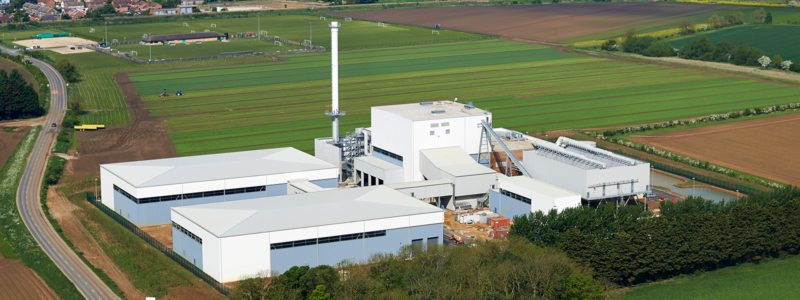Solution provider

Case
Biomass


Add the case to your visit request and let us know that you are interested in visiting Denmark
Combustion is far the most effective generation of heat and power from dry solid biomass. Electrical efficiency of 33,5% (LHV) has been proven on straw and new plants are under construction with fuel efficiency above 103% in combined heat and power (CHP) mode.
Utilising biomass residues for energy
Residual biomass from agriculture such as straw provides an indisputable source for sustainable energy production. However, the straw is a very problematic fuel due to high chlorine, potassium and sodium content resulting in a corrosive ash with low melting point and requires a special boiler design. In Denmark, biomass boilers have been in operation on straw from wheat and maize for three decades. Step by step, the design has been improved and the steam parameters increased up to today’s standard of 110 bar and 540 °C are considered as best available technology (BAT).
The biomass combustions plants provide dispatchable power supply and support to the increased amount of renewable on the grid. The wide control range 30-105% in combination with heat accumulators ensure the connection to the grid and the possibility to ramp up and down in parallel to the supply of district heating.
The Sleaford plant in Lincolnshire
The Sleaford plant in Lincolnshire, UK, is an example of BAT for straw fired boilers for power production. The project was executed in a consortium between BWSC and BWE (now part of BWSC) with the latter as boiler supplier. It is built for a heat input of up to 120 MWth equivalent to a straw consumption of 30 tons/hour, summing up to 240.000 tons/year and generating up 38.5 MW power, corresponding to approximately 65,000 households and businesses. It is also possible to use up to 22 % wood chips in the boiler. Replacing coal at the Sleaford plant reduces CO2 emissions by more than 150,000 tons/year.
The boiler and the feeding system
The boiler is a drum type with natural circulation. The straw feeding system and patended scarifier developed by BWSC (then: BWE) is adaptable to different types of square bales such as Heston and CLAAS. The straw bales are conveyed through four sets of straw feeding lines to the boiler. The boiler is designed and optimised to operation with corrosive and sticky ash caused by cereal straw combustion. Hence super heaters are designes as slagging super heaters using austenitic material grade.
The grate
The water cooled vibrating grate designed by BSWC (then: BWE) ensures homogeneous and stable combustion of untreated biomass and can handle fuels such as straw, wood chips, cotton reduals, olive cake etc. The main fuel used on Sleaford is supplied in straw bales and fed in via the bale openers and the stoker feeders. The water cooled vibrating grate is part of the evaporator system of the boiler and the design ensures the optimal utilisation of the fuel with a minimum of maintenance.
The fuel
Sleaford is built for 100 per cent straw-firing. With a heat input of up 115 MJ/s this i equivalent to an annual consumption of straw in the range of 240,000 tons. The plant is also designed to operate with up to 20 per cent wood chips as auxiliary fuel. The equivalent CO2 reduction is close to 250,000 tons per year.
Recycling resources, utilising surplus heat and spurring jobs
The Sleaford plant’s proven technology is designed for clean and efficient combustion of straw supplied mainly by farms within a 30-mile radius of Sleaford. Ash produced by the plant will be recycled as crop fertilizer. The Sleaford plant is equipped with a flue gas cleaning system meeting the required emission limit values (IED ELV) for NOX, SO2 and particulate. As well as generating 38.5 MW electrical power, the surplus heat generated by the plant is used for district heating purposes in the Sleaford area (public swimming pool, bowling centre, football club and District Council’s office).
Long term contract with local farmers on fuel supply and 80 jobs during operations support the local economy by approximately £10 million/year.
Positive spin-off from Sleaford
In addition to Sleaford, another two turnkey straw-fired power plant projects have been secured with BWSC, allowing a further fuel flexibility by burning straw and mischanthus in combination with wood chips. Both projects, Brigg and Snetterton, are 10% larger in capacity compared to Sleaford and carried out in jointly ownership between PensionDenmark and BWSC with BWSC as O&M provider for 15 years.